Window Cleaning Sponges
 FREE SHIPPING ON ORDERS OVER $49*
FREE SHIPPING ON ORDERS OVER $49*
*Ground shipments to the continental US.
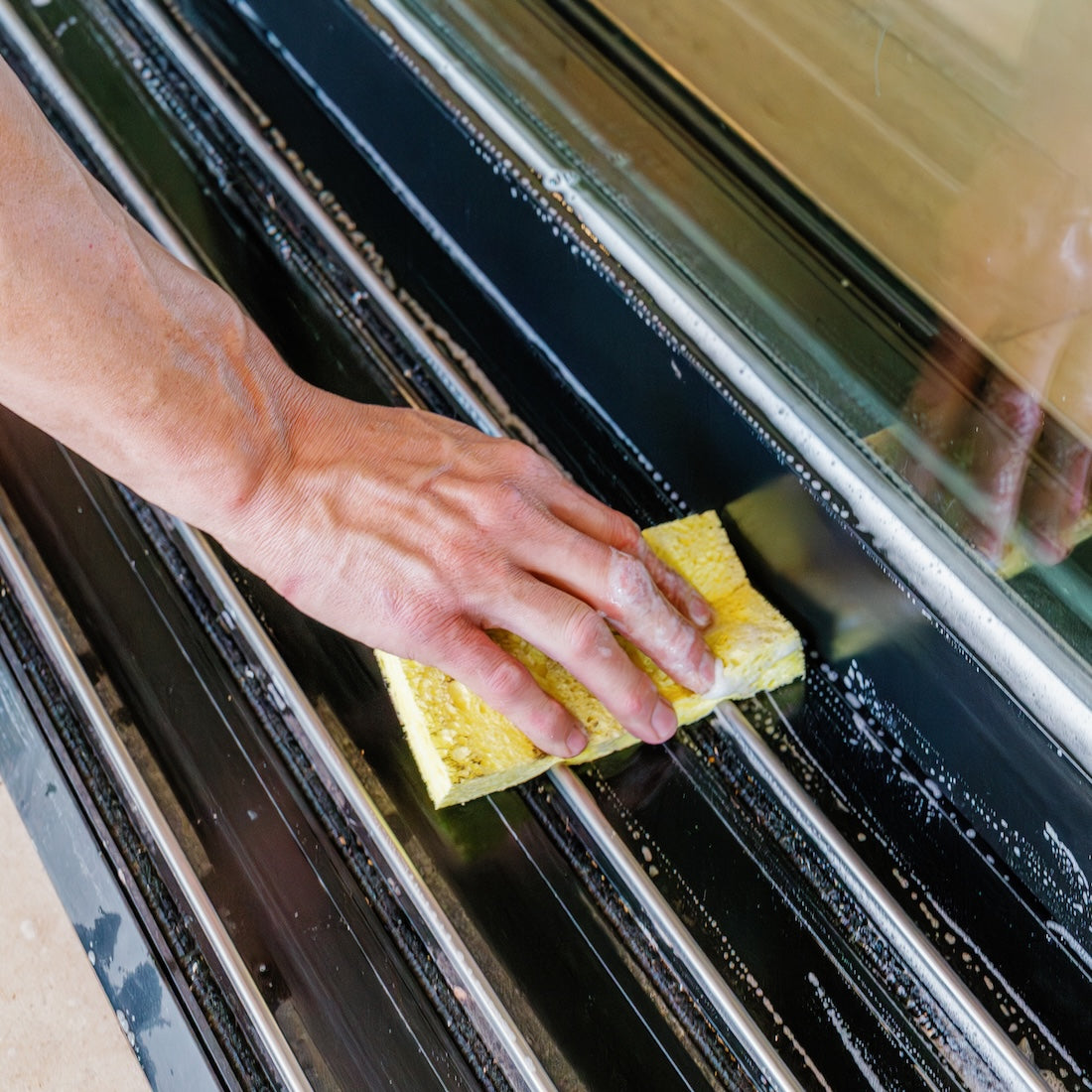
Soak Up Everything you Need to Know About Window Cleaning Sponges
The sponge is destined for more than just scrubbing dishes, it can also play a huge role in cleaning windows. From wiping down frames to scrubbing away grime with your favorite window-cleaning solution, we’ll talk about how to get the most out of window-cleaning sponges so you can see why these squishy companions are useful beyond the kitchen sink.
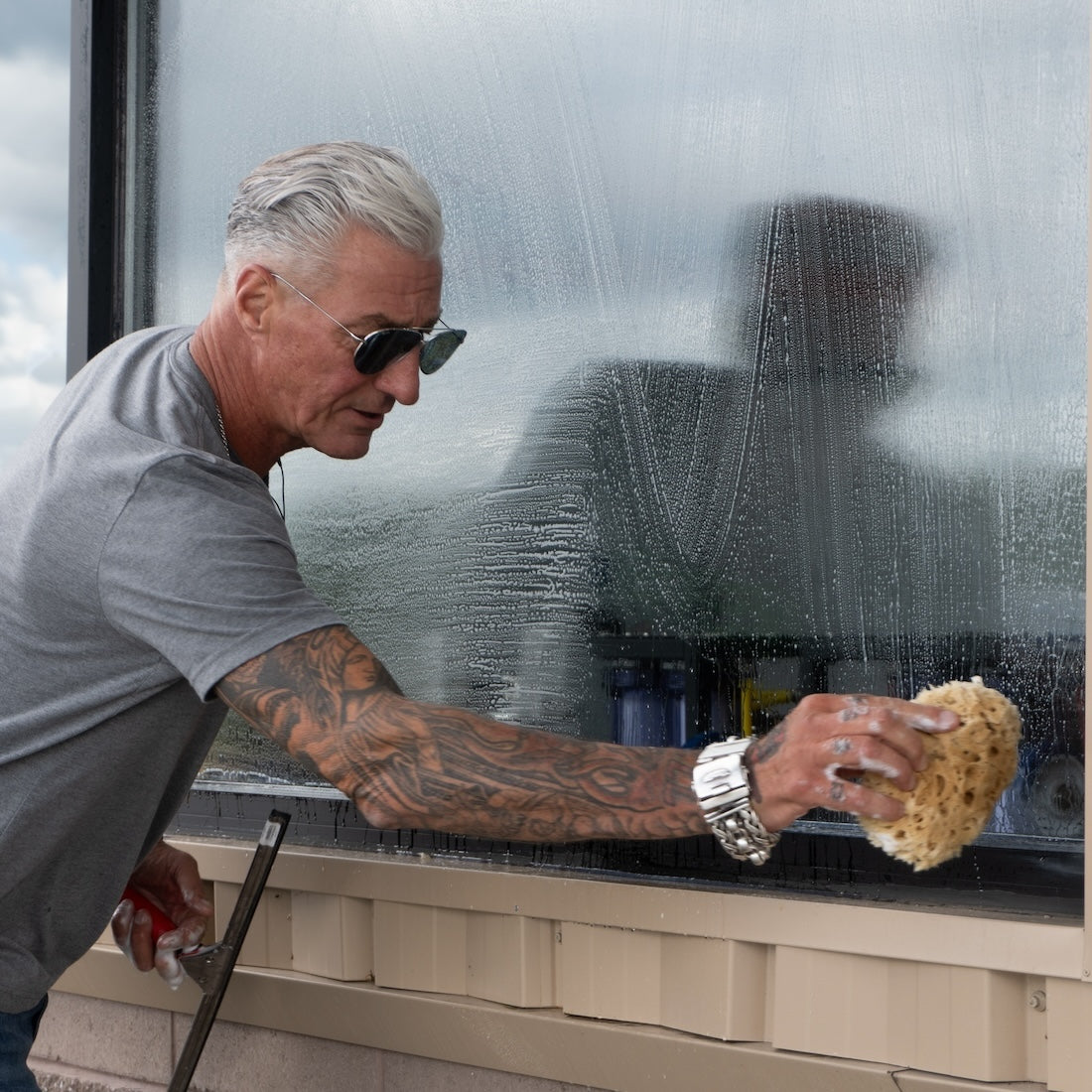
What Role Do Sponges Play in Window Cleaning?
Window cleaning sponges can be used in several different ways to help you with your cleaning endeavors. They can be wonderful for soaking up excess water, applying cleaning solutions, or even gently scrubbing away dirt and grime without leaving a mark. Because they are so malleable and squishy, sponges are wonderful for wiping down dirty window frames and ledges as they can easily conform to the contours of the surface. Sponges are also very absorptive, which makes them great for applying glass cleaning solution; just drop it in your bucket and you're ready to go with ample fluid retention. On top of this, their porosity can make them really good scrubbers while remaining gentle enough to avoid scratches. If you’re up against tough stains on glass or even window frames, a Magic Foam Eraser can quite literally feel like magic. Overall, their versatility and gentle touch can make them a valuable asset in achieving that streak-free shine we all aim for.
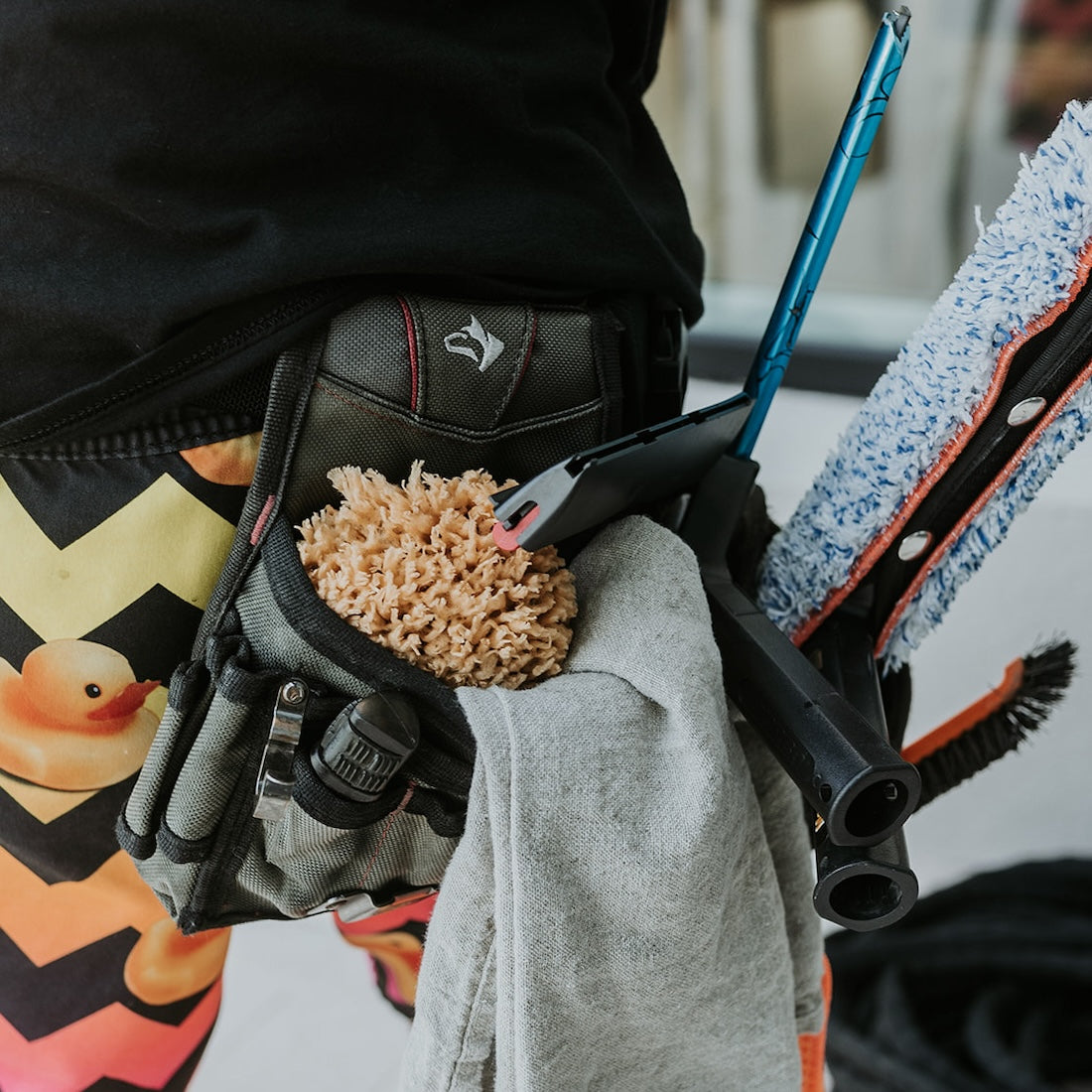
When to use a window cleaning sponge?
There are several situations where a window cleaning sponge will really shine. First off, when cleaning small windows such as French panes where your T-Bar might not fit, a sponge provides ease of access for lathering the window with your favorite cleaning solution. You might even find it useful for scrubbing deep within the window tracks thanks to its flexibility. Another great time to use a window cleaning sponge is when dealing with very dusty window frames. By conforming to the shape of the frames, you’ll be able to wipe things away much more quickly and with ease. You can even attach it to your pole with a clamping accessory to work with a sponge at greater heights! Lastly, when you want a little scrubbing power while still being very gentle for something like fingerprints, a sponge might be the answer to your problems. It all comes down to what you think can help you get the job done better and faster.
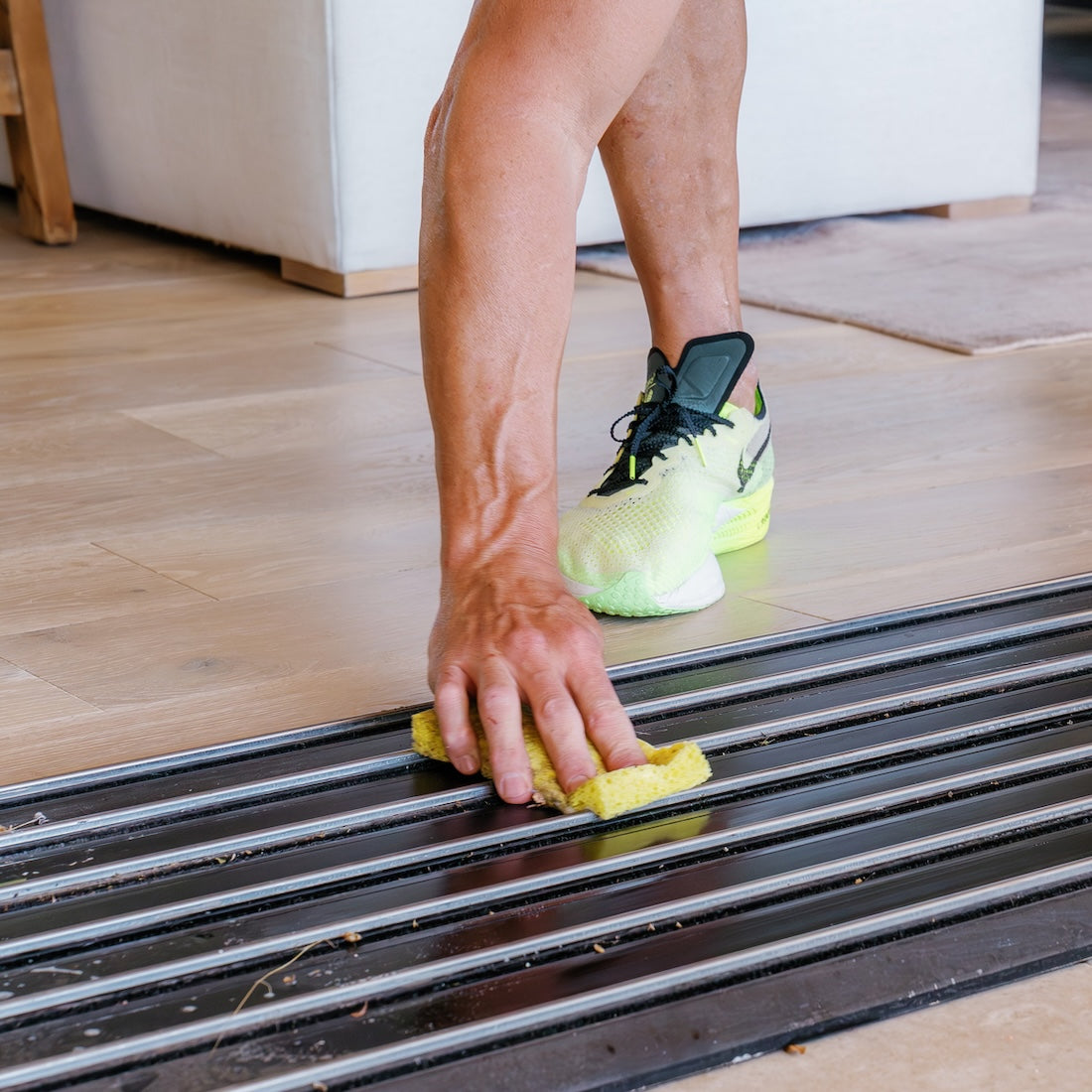
What Types of window cleaning sponges are there?
Not all sponges come from the sea. There’s the classic yellow cellulose sponge, absorbent and soft, perfect for general cleaning. Then, you have the abrasive-sided sponges, a bit tougher, ready to battle more stubborn stains while maintaining most of their absorptive abilities. And let’s not forget the natural sea wool sponges, the most absorptive option available. Lastly, you’ll find the magic eraser. This one is a little different from the others because it’s been specially designed to aid in stain removal. If you have stubborn scuffs or stains on window frames, this is a “go-to” solution for many professionals.
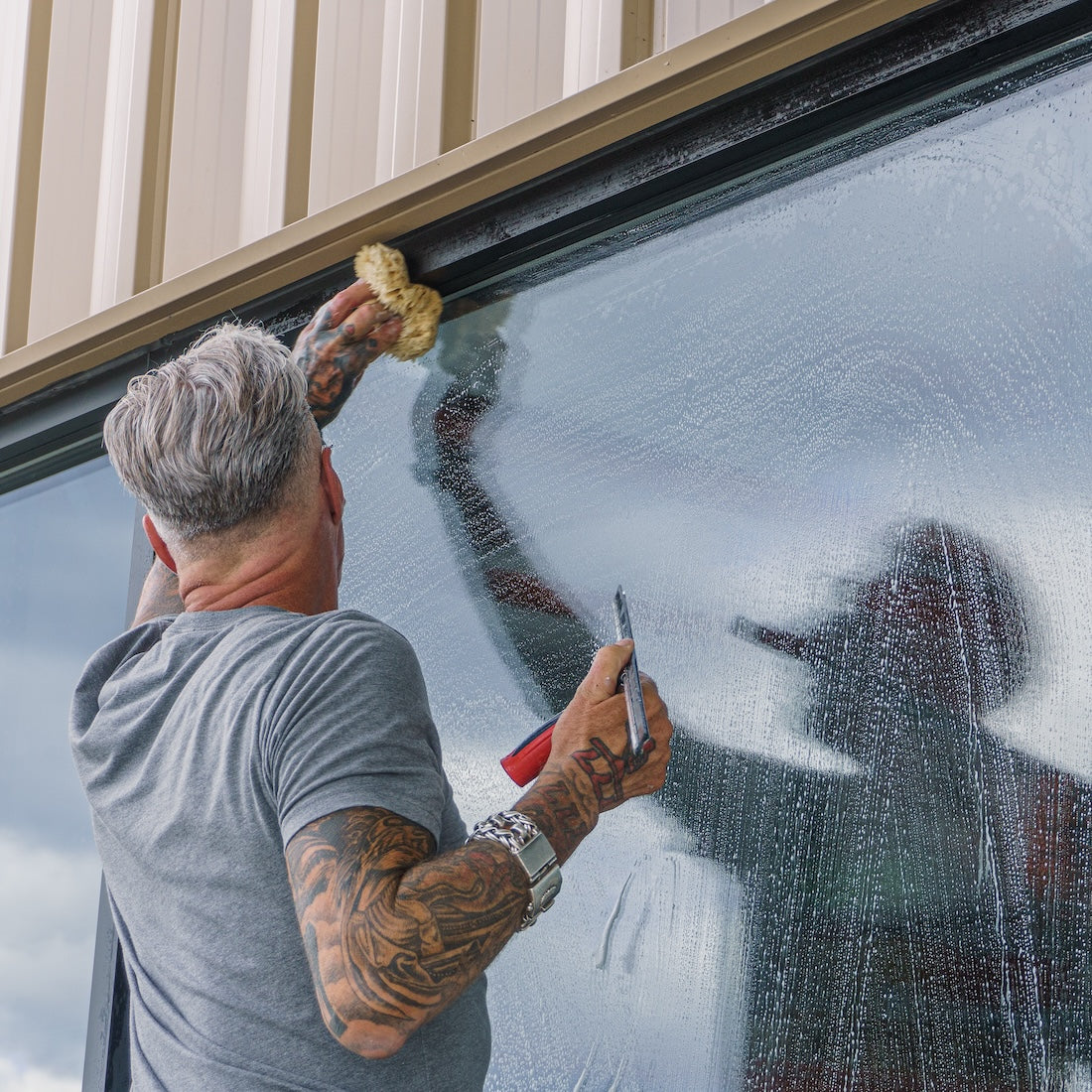
Difference between a Window cleaning sponge and a window cleaning towel?
While both sponges and towels are essential in the window-cleaning toolkit, they each have their moments to shine. Sponges can be your go-to for the initial attack by applying a cleaning solution and agitating those areas of the glass that need a gentle scrub. Towels, on the other hand, are the closing act, drying and polishing the glass to a perfect shine. You can think of sponges as the setup crew and towels as the finishing touch. Sponges can be similar to T-Bar scrubbers as they’re both used to apply solution and agitate debris. On the other hand, they can be comparable to towels when you use your sponge to wipe up and absorb excess water runoff on frames and ledges.
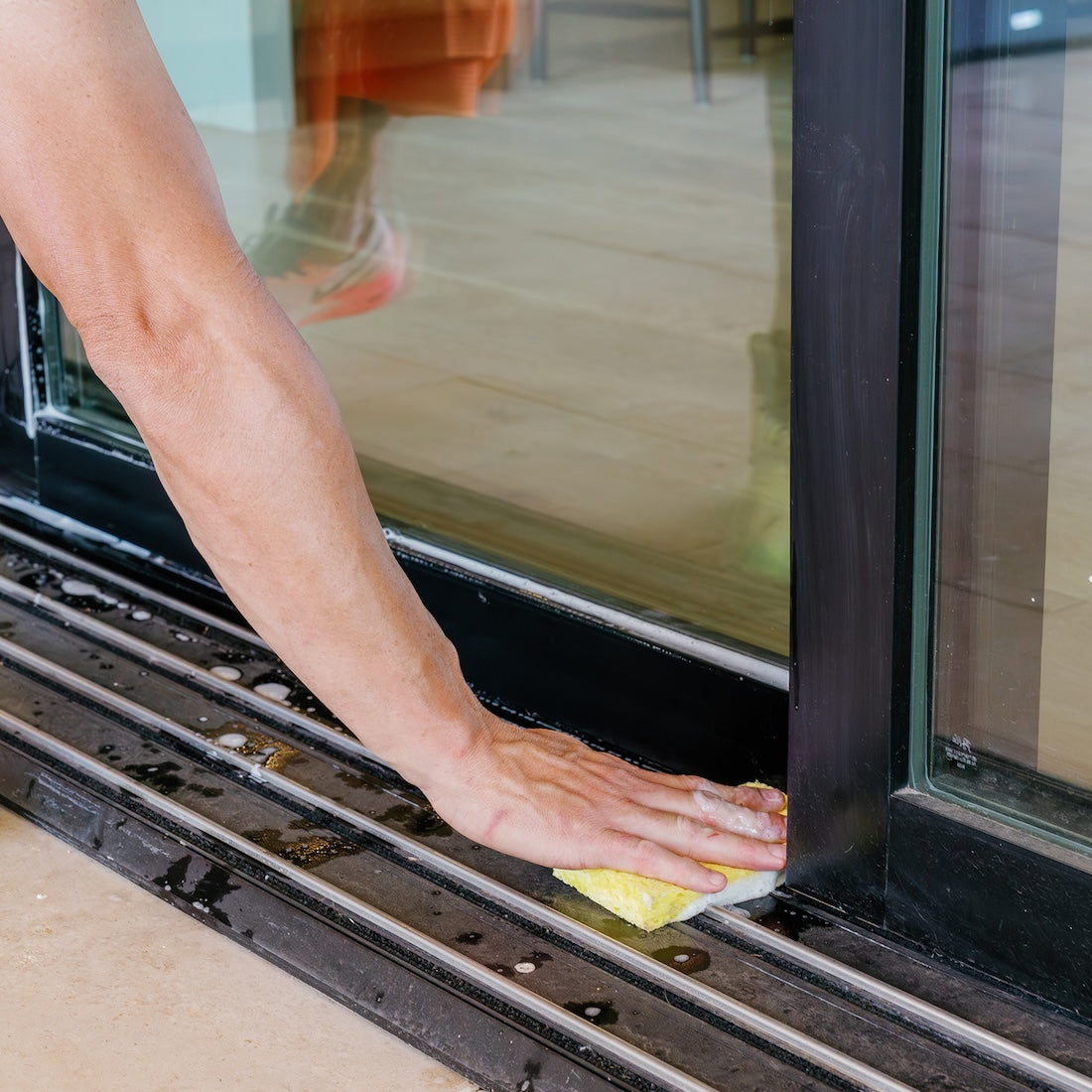
How to properly clean each type of window-cleaning sponge?
To keep your window cleaning sponges performance-ready, proper care is crucial. Start by squeezing and rinsing them thoroughly after each use to remove any dirt or cleaning solution. For your cellulose sponges, give them a deep clean by soaking them in a mixture of warm water and a bit of bleach to disinfect and refresh. Just be sure to fully rinse and wring out all the bleach at the end. For your natural sea moss sponges, you can soak them in diluted peroxide to clean them and extend their life. Avoid high heat and air dry all of your sponges completely to prevent any musty odors or bacterial growth. A little TLC can go a long way in extending your sponge's life.
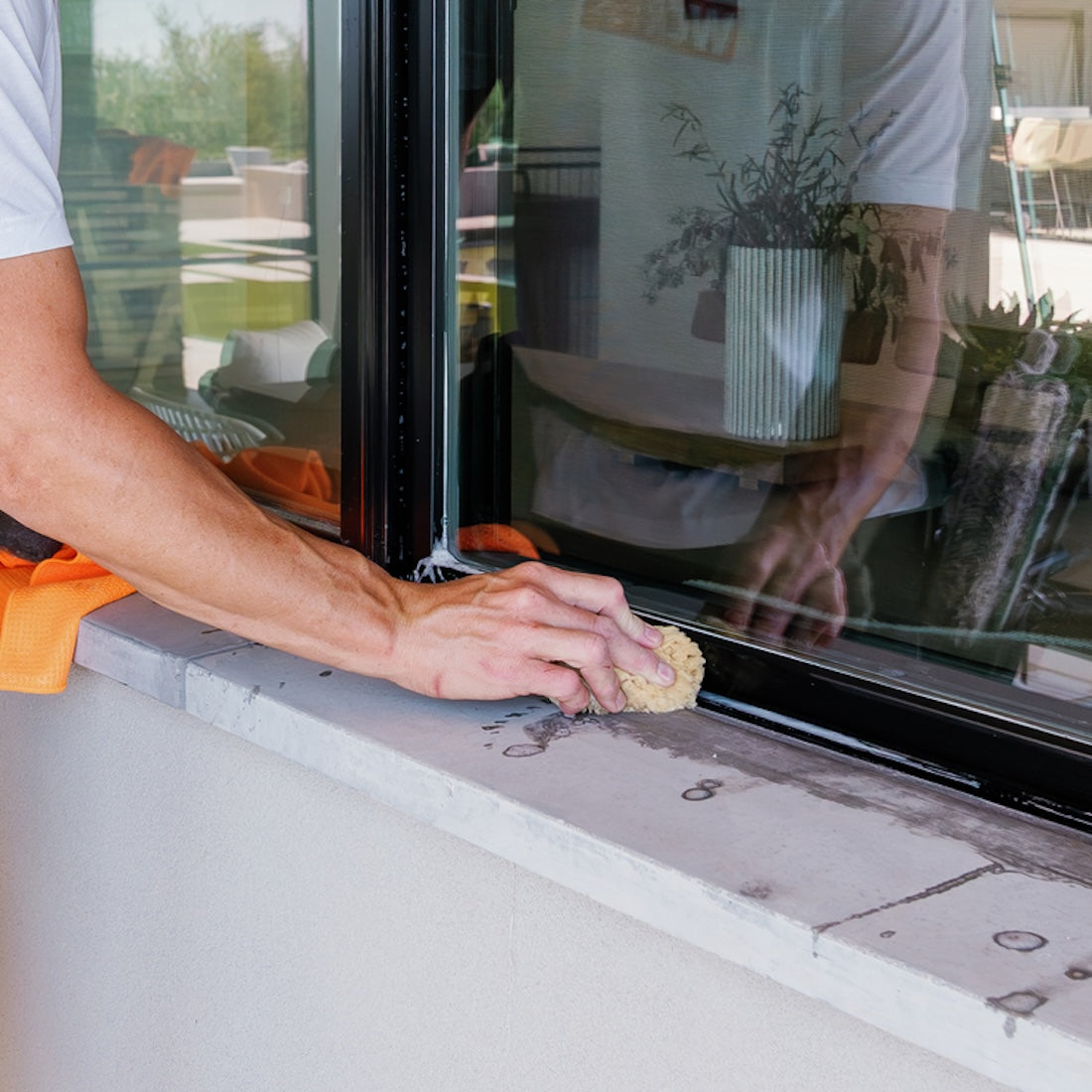
What's the difference between Natural Sea Wool Sponges vs Synthetic sponges?
When it comes to the showdown between natural sea wool sponges and their synthetic counterparts, it’s a matter of durability and price. Natural sea wool sponges are gentle giants, incredibly soft and highly absorbent, perfect for delicate surfaces. However, they can be pricier and might not last as long as their synthetic rivals. Synthetic sponges, engineered for endurance, can take on tougher jobs and often come in a variety of shapes and options for abrasiveness, all while being kinder to your wallet. As usual, it’s a great idea to have both kinds available so you’re always prepared.
Window cleaning sponges, whether you're team natural or synthetic, can play a pivotal role in keeping our views clear. They remind us that sometimes, the softest touch can make the biggest difference. So, the next time you gear up for a window-cleaning session, remember to give a little nod to your sponge and think about how it could make the task at hand a little easier. Whether you’re scrubbing tiny panes or wiping down muddy ledges, these squishy sidekicks might be your ticket to a flawless performance.





